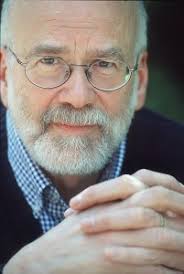
Poetry is ever-evolving. Sometimes what looks new (read: “prose poetry”) has actually been around a long time (read: since the 1840s). But what about space in the middle of a line? I see more and more of it. What does it mean? You can’t look it up in your Poet’s Glossary. I mean, where would you search? An entry for “line”? For “space”? For “blank”?
Maybe it’s the cool thing to do in poetry, like the latest fashion or name brand being worn by the popular kids in middle school. I don’t know. I am, as usual, behind the curve. Bewitched and bewildered. Late to the party.
So let’s try to figure it out together. Here is a segment from the title poem of Meghan O’Rourke’s collection, Sun in Days. I’ve enjoyed a lot of her work in the book, but some of the poems do this sudden space thing. It’s like “we interrupt this poem to do the Star Trek space-the-final-frontier thing. We will get back to our regularly-scheduled line as soon as Scottie beams words down.”
from Part 2 of “Sun in Days’ by Meghan O’Rourke:
The pond near the house in Maine
where we lived for one year
to “get away” from the city the pond
where the skaters on Saturdays came,
red scarves through white snow,
voices drawing near and pulling
away, trees against the clouds.
My first thought was, “Ah. It’s a line break in the middle of a line, so as to avoid overly-short lines!” It was a Eureka moment. In O’Rourke’s lines above, this theory seems to work in the fifth line where you might not want to see a two-word line such as “red scarves.”
Or maybe the whole purpose of the space is to signal the reader to pause. This theory looks reasonable in line 3 where the gap between “city” and “the pond” serves as a logical place for a comma, perhaps. The problem with the theory, though, comes with line 4. Why would a reader pause between “skaters” and “on Saturdays came” when they logically flow together?
Is it like concrete poetry, then? Do we connect the white space to form something pleasing to the eye, a treasure-map secret to the poem’s meaning, possibly?
How about this–an invisible em dash there to point at and emphasize what follows?
As they say in the UK, I’m gobsmacked. Still, that hasn’t stopped me from trying to innovate. I’m considering trying some of this in my new work, so it might prove handy. And cutting-edge. And cooler than a penguin in Reykjavik.
But, to be boy-scout honest, I’d be spacing as another form of punctuation, is all. Space as hard period or semicolon. Space as soft comma or colon. Space as “OK, people, let’s take a quick breath because we can.”
That’s it. Because we can. Poetic license strikes again in a place with zero gravity yet.

